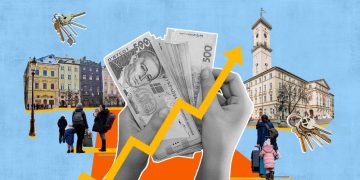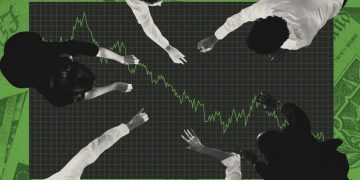Introduction
In recent months, the interest rate futures market has exhibited notable volatility, drawing intense scrutiny from investors, economists, and policymakers worldwide. These fluctuations are not merely technical blips but rather critical signals reflecting collective market expectations about the future trajectory of interest rates, inflation, and the broader economic outlook. As interest rates are a foundational factor influencing virtually all asset classes—ranging from bonds and equities to real estate and currencies—the insights derived from futures markets can provide a strategic advantage for investors aiming to anticipate and adapt to upcoming shifts.
This article explores the causes behind recent swings in interest rate futures, their economic and market implications, and actionable strategies that investors should consider to position their portfolios proactively in an environment of uncertainty and change.
Understanding Interest Rate Futures: A Primer
Interest rate futures are standardized contracts traded on exchanges, allowing market participants to lock in an interest rate for a future date. They serve as a vital price discovery mechanism, providing a transparent window into how investors collectively forecast central bank moves and macroeconomic trends.
Because monetary policy decisions shape borrowing costs, capital allocation, and consumer behavior, these futures reflect expectations about inflation, growth, and risk. Movements in futures prices precede official policy changes and can often signal turning points in economic cycles, making them indispensable for strategic asset allocation and risk management.
The Drivers Behind Recent Volatility
The heightened swings in interest rate futures over the past quarters can be attributed to several interconnected factors:
- Central Bank Communication Ambiguity: While many central banks have embarked on tightening cycles to combat elevated inflation, their forward guidance has sometimes been mixed or cautious. Divergent statements from Fed officials or ECB representatives create ambiguity about the pace and magnitude of future rate hikes.
- Inflation Surprises: Unexpected inflation prints—both above and below consensus forecasts—prompt swift repricing in the futures market. Persistent inflation pressures fuel speculation about aggressive tightening, while signs of easing can trigger expectations of a pause or reversal.
- Economic Data Variability: Mixed economic indicators, such as fluctuating employment figures, manufacturing output, and consumer spending, inject uncertainty regarding the health of the economy and the appropriateness of monetary policy stances.
- Geopolitical and Fiscal Developments: Geopolitical tensions, supply chain disruptions, and fiscal stimulus measures alter growth and inflation expectations, contributing to erratic futures market behavior.
Economic Signals Encoded in Futures Movements
Interest rate futures act as a barometer for how markets interpret the trajectory of monetary policy and economic health:
- Rising Futures Prices (Higher Rate Expectations): When futures prices increase, it indicates markets anticipate tighter monetary policy. This generally suggests concerns about persistent inflation that necessitate further rate hikes, which may cool economic expansion.
- Falling Futures Prices (Lower Rate Expectations): Declining prices reflect expectations that economic growth is slowing or recessionary risks are rising, prompting central banks to pause hikes or even cut rates.
- High Volatility (Market Uncertainty): Large swings and range-bound trading reveal market indecision, often occurring when data and signals conflict or unexpected events arise.
By tracking these signals, investors can glean insights into potential shifts in borrowing costs, credit availability, and risk appetite, all of which directly impact asset valuations.
Implications for Major Asset Classes
Bonds
Interest rates and bond prices share an inverse relationship: as rates rise, bond prices fall. Increased rate volatility demands careful duration management. Investors often pivot toward shorter-duration bonds or inflation-protected securities (TIPS) to hedge against rising rates and inflation risks.
Credit spreads may widen if tightening leads to economic slowdown, increasing default risk. Therefore, credit quality and liquidity considerations become paramount.
Equities
Higher interest rates raise the discount rate applied to future corporate earnings, particularly impacting growth-oriented sectors such as technology and consumer discretionary. Conversely, financial stocks often benefit from steeper yield curves, which can expand net interest margins.
Rate-sensitive sectors like utilities and real estate investment trusts (REITs) may underperform due to increased borrowing costs and valuation pressures.
Real Estate
Rising interest rates translate into higher mortgage costs and capital expenses, potentially slowing real estate demand and development. However, real assets can provide inflation hedges, and certain property segments—such as logistics facilities—may remain resilient due to structural demand drivers.
Currencies
Interest rate differentials between countries influence currency valuations. Rising U.S. rates, for example, can strengthen the dollar, affecting multinational earnings and cross-border investment flows. Currency volatility adds an additional layer of complexity for global investors.

Strategic Positioning: How Investors Should Respond
Given the signals from interest rate futures and their broader implications, investors can consider several strategic approaches:
- Portfolio Diversification: Spreading investments across asset classes and geographies helps mitigate risks associated with unpredictable rate movements and economic cycles.
- Active Duration Management: Adjusting bond holdings to reduce exposure to long maturities can limit sensitivity to rising rates. Incorporating inflation-protected bonds helps preserve purchasing power.
- Sector and Style Rotation: Shifting equity exposure toward sectors and companies with strong balance sheets, pricing power, or favorable dynamics in a rising rate environment can enhance resilience. Value stocks and financials often outperform growth during tightening cycles.
- Incorporating Inflation Hedges: Assets such as commodities, real estate, and TIPS offer protection against inflation risks often associated with monetary tightening.
- Utilizing Derivatives: Interest rate futures, options, and swaps can be employed to hedge against rate volatility or to express specific views on rate direction, offering flexibility and precision.
- Maintaining Liquidity and Flexibility: In an environment of uncertainty, holding sufficient liquid assets enables investors to respond swiftly to new information and market developments.
Risks and Caveats
Investors should be mindful of several risks when interpreting and acting on interest rate futures signals:
- Imperfect Predictive Power: While informative, futures prices do not guarantee actual policy moves or economic outcomes. Unexpected shocks or policy changes can disrupt market expectations.
- Overreaction and Noise: Futures markets can be subject to speculative excesses, leading to overreactions that may not reflect fundamentals.
- Liquidity Constraints: Certain hedging instruments or asset classes may suffer from reduced liquidity during market stress, impacting execution.
- Macro Uncertainty: Geopolitical events, pandemics, or structural economic shifts can quickly alter the landscape.
Staying informed, maintaining a disciplined process, and avoiding overconcentration in any single scenario are essential for navigating these risks.
Conclusion
The recent swings in interest rate futures encapsulate market uncertainty and evolving expectations about monetary policy, inflation, and economic growth. For investors, these movements offer valuable insights into upcoming financial conditions and highlight the need for proactive portfolio management.
By understanding the drivers behind futures market volatility and implementing diversified, flexible strategies, investors can better position themselves to manage risks and seize opportunities in an environment marked by rapid change and complexity.
Monitoring interest rate futures alongside economic indicators and policy developments will remain a critical component of successful investment decision-making as the global economy traverses an uncertain path ahead.



































